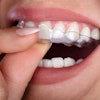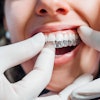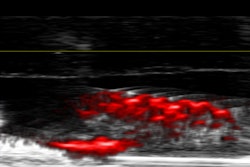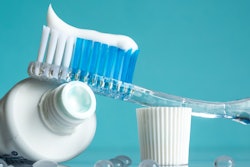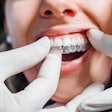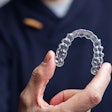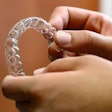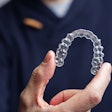Orthodontic treatments, particularly clear aligners (CAs), may improve oral health by stabilizing the oral microbiota and minimizing plaque buildup. This study was recently published in the International Dental Journal.
Additionally, aligners may enhance oral health markers, including reducing enamel demineralization, increasing microbiome alpha diversity, and creating greater microbial heterogeneity, the authors wrote.
"This study offers a comprehensive look at how orthodontic treatments and oral health conditions affect microbial communities and metabolite profiles in the oral cavity," wrote the authors, led by Qin Xie of the Fujian Medical University Union Hospital in China (Int Dent J, June 2025, Vol. 75:3, pp. 1585-1598).
The cross-sectional study analyzed oral microbiota and metabolomics in 61 adolescents with CAs or fixed appliances (FAs) from November to December 2023. Data on lifestyle factors, including brushing frequency, electric toothbrush use, mouthwash use, and oral health -- specifically the plaque index, enamel demineralization, and decayed teeth -- were collected through a questionnaire, they wrote.
A periodontist assessed plaque, and microbial DNA was extracted from 61 plaque samples while 16S rRNA sequencing and untargeted metabolomics were used to compare CAs and FAs in healthy and unhealthy oral environments.
Orthodontic treatment type and overall oral health status strongly influenced oral microbiota structure and metabolite composition and had a greater impact on the metabolome than the microbiome.
Changes in the oral microbiome were closely linked to health status and hygiene habits. Bacteria Prevotella and Treponema were associated with poor oral health, while Rothia, Granulicatella, and Streptococcus correlated with good oral hygiene, they wrote.
Furthermore, analysis identified 13 key metabolites, including cholylarginine, alpha-CEHC glucuronide, 2-hydroxypentanoic acid, Cer (d17:1/6 keto-PGF1alpha), and LysoPE (15:0/0:0), which were linked to inflammatory responses and served as predictive markers for poor oral health. These metabolites were strongly linked with microbial species such as Rothia, Prevotella, and Anaeroglobus, highlighting their potential as oral health biomarkers.
Nevertheless, the study had limitations. The use of 16S rRNA sequencing may have limited species-level identification, restricting detailed functional gene analysis, the authors added.
"While orthodontic treatments affect both the microbiome and metabolome, the overall health of the oral environment plays a more significant role in shaping microbial diversity," they concluded.

